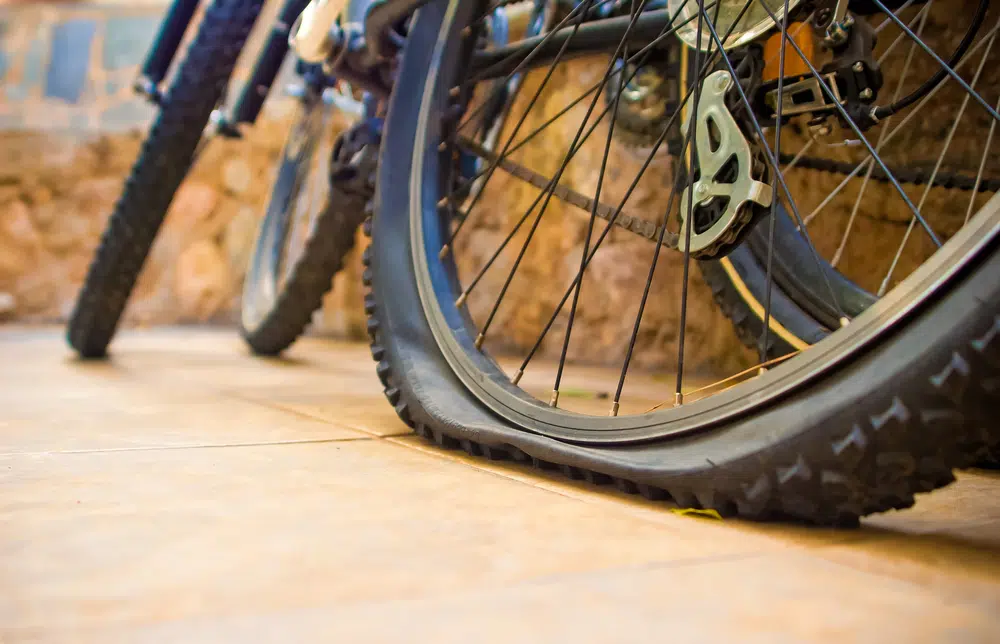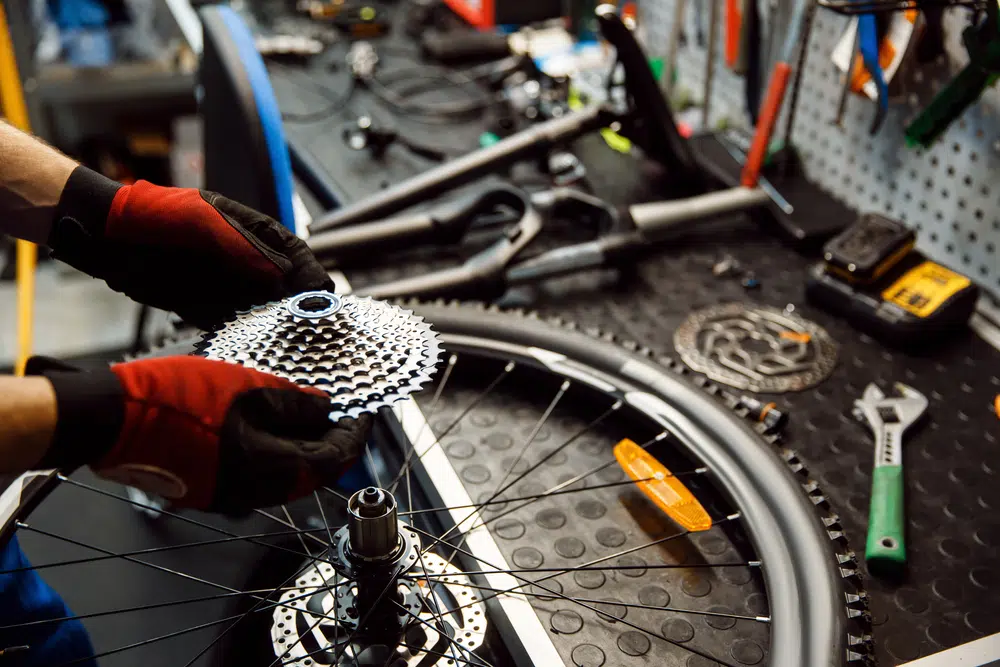Should I Replace Both Bike Tires At The Same Time?
For a safe and long-lasting itinerary, taking care of your bicycle tires is essential. Every bike enthusiast desires the proper tire form, size, etc. The only way to keep your tire in good shape is to have it checked on a regular basis and replace it when necessary. Many vehicle enthusiasts are perplexed by this: "Should I replace both bike tires at the same time?" To clear this up, read over the content below.
Signals indicating it's time to change your bicycle tire
Numerous signs tell you it's time to replace your bike's tires. The most common and easiest for you to acknowledge is when the bike tire explodes due to the expansion of the air pressure inside while the outer tire is no longer safe to use.
There have also been instances where the bike tire has exploded owing to jagged stones ripping the tire or sharp screws piercing the tire, causing irreversible tears,... You can also notice the condition of slowly running out of air in a few hours because a small tire puncture produces a progressive loss of pressure.

Signals indicating it's time to change your bicycle tire
Sometimes you need to change a tire. When a tire becomes worn out after a lengthy period of use, it is no longer safe for the open roadways and must be replaced. When traveling, the friction causes tire wear. Weight and terrain have a direct impact on tire wear rate. Hence rear tires with a heavier load will always wear faster.
Tire age limits: Over time, rubber compounds oxidize, resulting in decreased flexibility, increased brittleness, and reduced tread life. Rubber compounds are expected to last for a certain period of time before they become unusable.
Should or shouldn't replace two bike tires at the same time?
While checking, you perceive that you need to change a bicycle tire, but you're not sure whether to do it one at a time or both at the same time. In order to answer this question, you must first assess the condition of your two bicycle tires.
The rear tire usually shows indications of wear first, while the front tire will not. It is not required to change both tires at the same time in this scenario. Replace only the worn back tire and keep the front tire if it's in good condition.

Should or shouldn't replace two bike tires at the same time?
It is natural to replace two tires on both wheels at the same time if they are worn out and no longer meet the safety requirements in operation. Furthermore, having two new tires installed simultaneously would assist the bike in maintaining superior grip and durability throughout the voyage.
Because have such a high requirement for tire grip, professional cyclists frequently choose to change both tires at the same time. Instead, good bike riders will often replace the rear tire while keeping the front tire because the back tire wears out faster, and replacing one tire will save more cost.
So, should I replace both bike tires at the same time? This answer is contingent on whether you believe it is necessary, as there is no. There is no reason to change the tires if they are new and in good functioning order. Furthermore, after five years of use, you may need to replace two tires at a time to equalize the state of the bike and keep it in the best possible condition.
How to change the tires on a Bicycle
Many individuals wonder how to change the tires on a bicycle when they determine the condition of their tires and realize they need to replace them. There are two options available to you:
- Specialists in repair shops change tires.
- Change your bicycle tires at home.
We'll go over how to change tires at home so you can find out if you have the plan to change your tires by yourself.

How to change the tires on a Bicycle
Follow these instructions to change a bicycle tire at home:
Step 1: You need to release the bike tire. To do that, first, disconnect the brake pad and loosen the axle nut.
Step 2: Continue prying the tire down and then releasing it along the rim.
Step 3: To make it easier to remove the broken tube, take one bead or edge off the rim.
Step 4: Remove the tire from the tube and turn it inside out by placing it on your neck.
Step 5: Install the working tube by inserting one bead on the rim and leaving the other side unfastened. After you've fixed the tire, look for any gaps between the tire and the rim and push it against the bead while it's gaps.
If you're not sure how to do it, the best option is to take your car to a shop for assistance.
Is it better to replace a bicycle tube or a bicycle tire? Is it necessary to replace both at the same time?
Tires and tubes have different wear and tear and require distinct repair techniques. Although the tire protects the inner tube from the elements, the inner tube is more fragile and frequently broken. If you notice, you can realize that the patching or changing of the tube is occurring more often, and with tears of 2mm or more, it is almost impossible to save the tube, and you will need a new one.
Too much travel and friction with the road surface, on the other hand, causes gradual tire degradation. Tire fabric that has worn out might bulge and lose traction on the road. These are the primary causes of bicycle accidents.

Is it better to replace a bicycle tube or a bicycle tire? Is it necessary to replace both at the same time?
There is no answer to the question, "Is it better to replace a bicycle tube or a bicycle tire?" Because depending on each case, you need to replace the right part. Changing both tubes and tires simultaneously is also considered unnecessary to ensure the operation of the vehicle.
Conclusion
Depending on the state of the vehicle, one or both tires should be replaced simultaneously. Changing tires will assure the vehicle's long-term operation, avoiding potential accidents and keeping the driver in the best possible condition on the long itinerary. Hopefully, the information in this article has given you the information you need to answer the question, "Should I replace both bike tires at the same time?" To understand more about bicycles and the travels they may take, check out our other categories.
